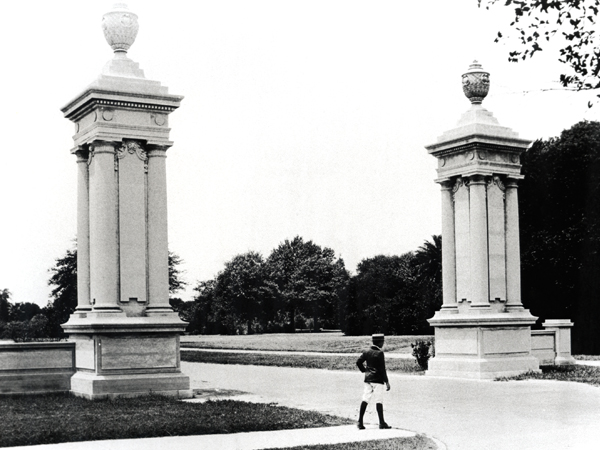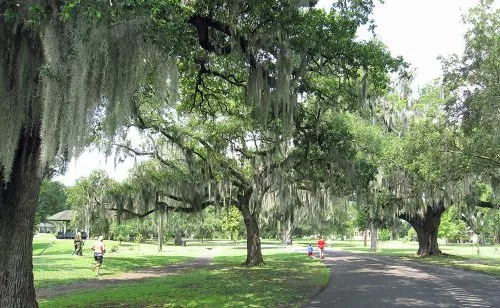Include a Topper!
-
Happy Birthday Banner
$9.00
Add Ons
Your cart is currently empty!

Whether it’s your first time in New Orleans or you’re a verified local, one of the city’s must-see destinations is Audubon Park. Home to ancient live oaks, lagoons, walking trails, and one of the nation’s best zoos, the park also contains countless stories from the city’s past. The nearly 150-year history of Audubon Park is the history of famous men, daring experiments, and just a bit of corruption.

The area we know as Audubon Park was once part of two plantations that ran alongside one another. The upper tract of land belonged to Pierre Foucher and the lower to Etienne de Boré. While the families were related (Foucher was de Boré’s son-in-law) neither could have anticipated the ways they would change history.
If de Boré’s name is familiar it’s not surprising. Not only was he the city’s first mayor, he was also responsible for finding a way to granulate sugar from Louisiana grown sugar cane. Before that, all attempts to granulate sugar here were unsuccessful since the cane requires a frost-free growing season.
But de Boré found that by planting the cane closely together it minimized damage from frost and allowed the crop to stay in the ground long enough for it to have the higher sucrose content necessary to create granulated sugar. His 1795 success was a game-changer for local economies as he’d created a new cash crop for Louisiana that survives today.
De Boré’s land passed into his children’s hands in 1820. By 1825 his daughter, Madame Pierre Foucher, and her husband owned all of the land that would become Audubon Park. The Foucher’s planted long rows of live oaks to frame their home, many of which still stand today.
Pierre’s death in 1832 saw the land passing to his son Louis. Louis Foucher, a French Creole who dreamed of France, abandoned the plantation for Paris before the Civil War. His death in 1869 passed the land into his wife’s hands and she sold what would become the Audubon tracts in 1871.
Originally named Upper City Park, the land we now know as Audubon Park was created as the result of a land scheme. When the Widow Foucher sold the tracts to real estate developers Bloomer and Southworth, she likely thought they would subdivide the land and make another residential neighborhood in the Uptown area.
Instead, the men created a scheme in which they lobbied the state to create a new park and a capitol building on opposite sides of St. Charles Avenue. After selling the land to the city and having a bill passed for the creation of the park, they were able to sell the surrounding land for a hefty profit.
It wasn’t until the 1880s that construction of the park really got underway. A group of cotton merchants petitioned congress to have a world’s fair in New Orleans to stimulate the local economy and Upper City Park was chosen as the site. While the 1884-1885 World’s Industrial and Cotton Centennial Exposition was far from a success financially, the elegant and extensive landscaping done to the park, along with all the attention it received, made the surrounding neighborhood one of the most sought after
and fashionable in the city.
In 1886 Upper City Park was rechristened as Audubon Park to honor John James Audubon, painter of the famous “Birds of America.” Soon after the name change, an extensive redesign of the park began as well. The city contacted the Olmstead Firm in New York City, and after several years of negotiation, New Orleans was finally able to secure the firm that was responsible for designing the world-famous Central Park.
John Charles Olmstead’s plans included using native plants and architecture to reflect the various cultures that had left their marks in the city. He also designed lagoons and a water system to help remove some of the area’s more swamp-like features. But today’s Audubon Park wasn’t Olmstead’s design alone. Compromises with the city included a large swimming pool being added as well as tennis courts and a softball field.

Over a million people visit Audubon Park each year. While time and new construction in the 1970s have changed the layout from both the designs of the 1880s and the early 1900s, there is something left of each of the previous incarnations.
Within the park, you can find the famous de Boré oak, planted in the 1700s and which is the oldest living oak in the city. The large “meteorite” found in the park is actually a piece of iron ore left behind from the 1884-1885 Cotton Expo. Olmstead, of course, left his lagoons, and the major restoration of the park in the 1970s helped turn Audubon Zoo into one of the finest in the world.
There are many stories in Audubon Park, and we’ve only been able to touch on a few here. But it seems plain that the most lasting and meaningful of them will be the ones that you tell from memories created after a visit.